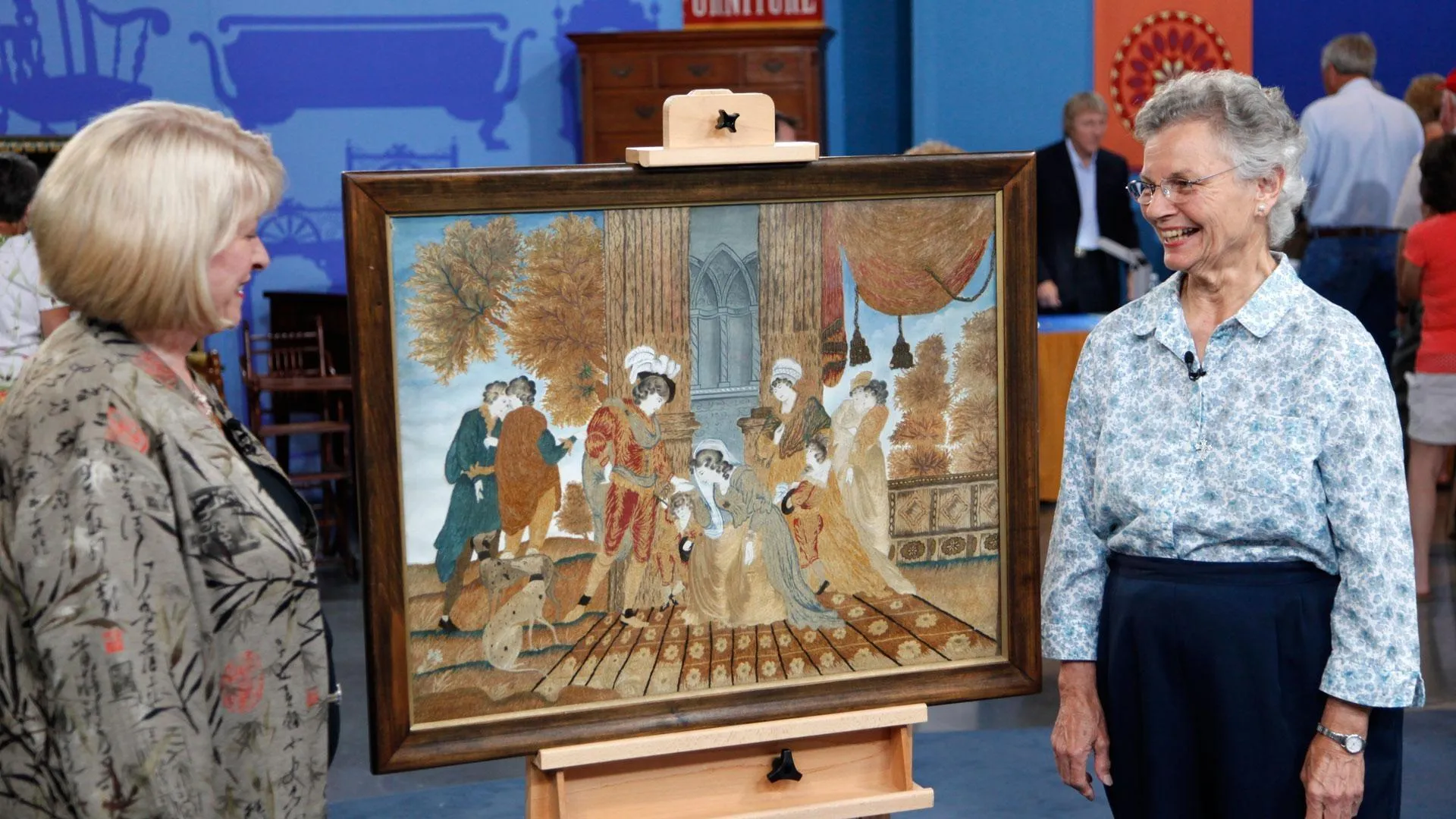GUEST: They belonged to my great-grandmother. I own the home that my paternal grandparents built. And I inherited a lot of the furniture and the items, and my great-grandmother and my grandmother were avid collectors of Vieux Paris, Old Paris. And these little vases always sat in the master bedroom on my grandmother's dresser. They date back to probably in the neighborhood of the 1850s to the 1860s. And they were purchased by my great-grandfather in New Orleans and they're still sitting on the dresser in the master bedroom.
APPRAISER: Okay, they're really interestingly modeled as tulips. In the 19th century, especially the early 19th century, there was kind of a craze for vases in the shape of tulips. They were popular not only in France but also very popular in England and were made by a number of different companies, including some of the Staffordshire potteries as well as the fine china companies like Spode. One thing that's interesting about this pair is they're two different colors. Normally you would expect a pair of vases to be exactly the same color. They're a little bit crudely modeled. They're well painted, but the English pieces at the same time period would be much more crisply modeled and even more well painted, but I don't think it's a huge issue. You are correct in that they could be called Vieux Paris porcelains, which is sometimes also referred to as Old Paris porcelain, Paris porcelain. And what that term means is that they were made in or around Paris, usually considered the first half through the third quarter of the 19th century. It's a generic term used because usually we don't know what factory made them. But in this case, we do know who made them because they're marked on the bottom with the mark of the manufacturer. On the bottom is a "J" and a "P" in blue, and they're both marked. And that's the mark of a company named Jacob Petit, who is a well-respected manufacturer of Vieux Paris porcelain. There is a huge, deep, three-arm crack in the bottom of the vase. And that is a manufacturer flaw that happened in the firing. Generally, a manufacturer's flaw that does not visually detract, especially if it's on the bottom, has no effect whatsoever on the value. They're usually attributed to the 1840s. French porcelain have been especially popular in the American South, especially prior to the Civil War. They're still very popular with collectors. This pair would probably sell, in a retail situation, between $1,500 and $2,500. They have a really nice value.
GUEST: Well, I hope that they can remain on the same dresser for many, many, many years.











